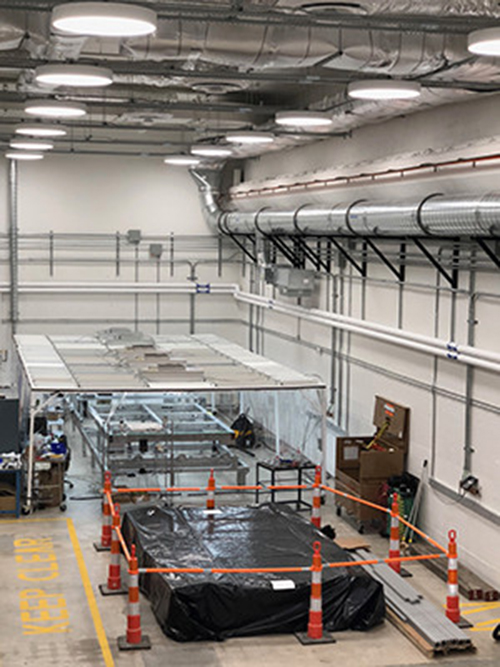Yale is one of four U.S. universities chosen to design and plan the production of 150 particle detector assemblies for a major international physics experiment.
A $1.6 million planning grant from the National Science Foundation will be divided among Yale University, the University of Chicago, Syracuse University, and the University of Wisconsin. The four institutions will develop engineering and design plans to help the Deep Underground Neutrino Experiment (DUNE) meet its goal of starting to collect data in 2026.
Supported by the U.S. Department of Energy (DOE) Office of Science and hosted by the DOE’s Fermilab facility, DUNE will use four particle detector modules — filled with a total of 70,000 tons of liquid argon — to look for tracks created by neutrinos to learn more about these elusive particles and the role they play in the universe.
A crucial building block of these modules are large, rectangular frames with four layers of wires on each side, called Anode Plane Assemblies (APA). Each APA comprises 24,000 meters of wire, wound in straight lines to record the signals created by neutrino collisions in liquid argon.
Over the past two years, DUNE collaborators have built six APAs, each about six meters long and 2.3 meters wide, for a prototype detector that was assembled at CERN, the European Organization for Nuclear Research. The final DUNE detectors, to be installed a mile underground at the Sanford Underground Research Facility in South Dakota, each will be 20 times larger.
DUNE will need 300 APAs. Half of them are expected to be built by a consortium of universities in the United Kingdom; the other half are expected to be built at facilities in the U.S., including Yale.

Yale and its partner institutions in the NSF planning grant have extensive expertise in the design and production of wire planes for liquid-argon neutrino detectors.
“It is the technology of choice for many neutrino experiments,” says Yale physicist Bonnie Fleming, who was the founding spokesperson for a pair of experiments, ArgoNeuT and MicroBooNE.
Fleming said the new work with DUNE is a natural extension of previous instrumentation work at Yale’s Wright Lab. “We built the MicroBooNE wire chamber here, and we are presently building the Short-Baseline Neutrino Detector wire frames,” Fleming says.
“The high bay spaces and cleanroom facilities at Wright Lab have allowed us to support the development of large-scale components for neutrino detectors. Our recent experience and the Wright Lab facilities make Yale one of the few universities in the U.S. capable to lead the construction of neutrino detector assemblies for DUNE,” says Karsten Heeger, director of the Wright Laboratory and a collaborator on DUNE.
Fleming noted that if the design and planning work for DUNE is successful, Yale may be in a position to host production for half of the U.S. contribution of wire chamber planes for DUNE. “The planning grant is a critical first step in realizing this vision,” she says.
Source: Yale University




